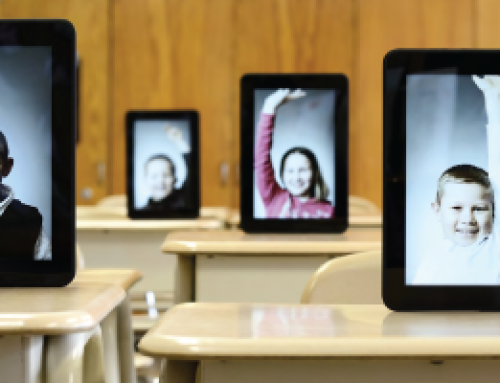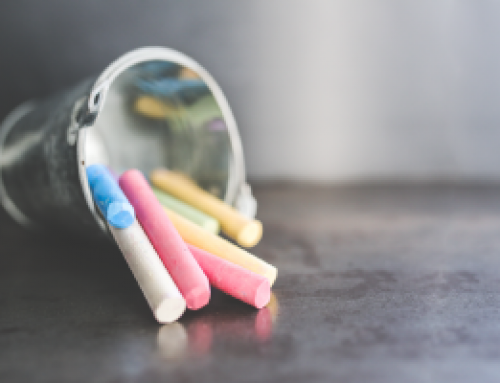Exploring student device choice criteria: Aesthetics, Ergonomics and Hard Fun
Why is it, that if you search for the “best device for students” in a good old’ resource filled search engine, the cogs begin to turn with some protest, spinning wheels of death appear on screen in seconds, and your trusted oracle splutters in defeat and churns out very little in the way of immediate advice and clear direction? SIMPLE – finding one answer to this question is just too hard. As an Educator, IT Director or Infrastructure Manager charged with solving this modern dilemma, the best place to start is with the learning needs of your students. Now that is all well and good to say – but what does that actually mean for the device decision maker? Let’s take a Mythbusters approach to this dilemma and look at three criteria that are not always the obvious constraints when choosing a device – Aesthetics, Ergonomics and Hard Fun.
Aesthetics
As adults we do see the world differently to our younger counterparts; black devices with black keyboards, tones of greys in logos and lettering, matt and gloss finishes all tend to bypass our senses. We tend to focus on the functionality of the tool rather than it’s look. Now having spent more hours in schools than the length of time it has taken for the Tandy TRS-80 to be recognised as a historic computational device (and yes I did have one!) I have spent some considerable stints watching the prolific and oh so important ritual of device personalisation. Now why is it that we in roles of authority often disallow this tribal practice? We ourselves, choose our clothing, style our hair, furnish our homes, adorn our personalities with indicators of who we are and how we wish to be perceived, but having stripped our learners in a school environment of this (well, not stripped… we do make them wear uniforms) we then do not provide or even consider enough aesthetic adornment space for student self-expression. Yes I said it! Akin to Marie Antoinette’s classic line – “Let them create.” Ultimately we wish to support the ideation of self-directedness in our learners. We strive for them to be critical and creative thinkers, original creators and producers of their own constructed content. Yet we dictate everything from page size to pen colour, neat hair to sock choice. Allowing this area of ownership over the device not only supports the integration of the tool into the learning, it begins to forge – dare I say it, pride and care over the tool itself. A sure fire way to lower the Service Level Agreement claims that are stacking up on a work bench somewhere. The aesthetics of a device tends to be higher on the priority list in our school learners than we acknowledge. Lid texture, palm rest spaces next to track pads, screen edges, keys…. are all hallowed turf for proclaiming identity. Stickers, photos and I have seen even rhinestones, tend to adorn these spaces on a device as notable badges of self, and why shouldn’t they be? We set functionality of screen brightness or tracking speed to suit our unique learning styles, so too does the device become an extension of our students and in turn an extension of their learning process. The other positive – when they do inevitably leave it somewhere, we know to look for that particular unicorn sticker that a frantic mother described over the phone. BUSTED!
Ergonomics
Now there are some considerations here that need to come to the fore. Weight distribution, screen size, lid locks, USB ports, and after looking so deeply at the design aesthetics our learners require, we need to also consider the learning styles and aptitudes of those same learners. We talk easily about the need for anywhere, anyhow – anytime learning, and the merits of such practice, yet have you actually sat on cold concrete in an area of the playground known as the “wind tunnel” without the necessity of filtered canopy lighting and actually balanced a laptop on your “lap” and been able to read the screen for glare? Hmmm… thought so. Classrooms no longer need the focus to be directed by a single tool, whether that be the whiteboard on the wall or where the data projects to. Students now carry with them their own viewing tool, so make sure that tool meets particular needs. Does the screen have a matte finish for glare minimisation when vertical and angled viewing is required or for when the screen may be detached lying horizontal in tablet mode? Is the weight distribution between the keyboard section and detached screen equal or unequal? Does this hinder or help the clipping in and unclipping process for small non dexterous fingers? Does it work for stomach mode? You know what I mean – on the floor! If the device screen flips back onto itself and the keyboard tucks under so that it can be held in tablet mode, is it a tad too top heavy so it just keeps flipping to the floor? Or does it need a vice like grip that requires most students focus to hold, and creates non-essential task redundancy of a students working memory to sustain? Or have you found Goldilocks’ just right bowl of porridge – and issue law, that students shouldn’t remove the screen of the 2 in 1 if working outside? Imagine like a child, visualise from the students’ perspective. The poignancy of that point of view may transform your choice. How they will hold the device? Use it? Place it is unusual circumstances to catch the right camera angle or to measure the height of the basketball hoop or to record their culinary creations? This tool will be asked to go to places that Captain Kirk never imagined and will lead you to think beyond the ergonomic desk and chair scenario. That, and watching the Year 8 girls turn on the camera so they can apply chap-stick, which isn’t lip gloss, but does still have ergonomic lip plumping attributes. BUSTED!
Hard Fun
Learning should be hard fun. It should encapsulate wonder, discover, multimedia extravaganzas and more than reading your maths textbook off a screen. Learning should make learners think, ponder, grow neural pathways and enjoy! Consider a device that will support these elements of learning. Yes, storage and RAM and software and peripherals all come into play to support the action ability of these elements, but also make considerations for what you do not know. The early Bauhaus Movement said it best – “Form follows function”, it seems obvious but is often forgotten, the teaching and learning, the ‘hard fun’, the heutagogy, should shape the device choice not vice versa. Where is the discovery and the fun in creation of moving pictures if the device doesn’t have a camera? Where is the ease of transition and fluidity of thought if a touch screen isn’t considered? How can a moment be relished and unpacked and explored if immediate inking isn’t available? Have you ever really watched a learner manipulate a tool? Despite our initial ideas on visual learning styles, the act is much more kinaesthetic than we first believe. There is a quick flick here, and a swish there, a drag, a copy, a paste, a drop. Maria Montessori once said “Watching a child makes it obvious that the development of his mind comes through his movements.” Intellectual activity is not motionless, Learning encompasses all action, educational theory and practice is informed by this idea, a device is an extension of this busy, kinetic, actionable process of hard fun. Consider all possibilities.





